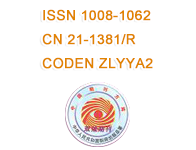摘要
目的:采用超声造影(CEUS)定量分析技术动态监测肾缺血再灌注损伤(Renal ischemia reperfusion injury,RIRI)后兔肾皮质血流灌注的改变。方法:54只家兔随机分为正常对照组,肾缺血后再灌注第2 h组、第16 h组、第24 h组、第3 d组、第5 d组。行CEUS并应用时间-强度曲线测量灌注峰值时间(TTP)、曲线上升支斜率(β)、灌注峰值强度(A)、曲线下面积(AUC),观察各参数的变化并分析与病理改变的相关性。结果:肾缺血恢复灌注后各组与对照组相比TTP值增加,β值降低,AUC增大(P<0.05);缺血再灌注组各组间TTP、β有统计学差异,其中恢复灌注后第3d的TTP的延长和β的下降最为显著(P<0.01)。A值在RIRI后第16 h,24 h,3 d较对照组降低(P<0.05),第3d最为显著(P<0.01)。结论:CEUS定量分析技术能在缺血再灌注损伤发生后早期发现肾皮质血流灌注的异常,肾缺血再灌注损伤早期即发生肾皮质微循环障碍,在第3 d肾皮质微循环灌注受损最为严重,度过这一“危险期”,肾皮质微循环受损得以改善,CEUS定量分析技术能敏感反映这一过程。
Abstract
Objective: To explore the value of contrast-enhanced ultrasonography(CEUS) in quantitative evaluation of rabbit’s cortex hemodynamic changes after renal ischemia reperfusion injury(RIRI). Methods: All the 54 rabbits were randomly divided into control group and different time groups at 2 h, 16 h, 24 h, 3 d, 5 d after ischemia reperfusion. Using CEUS to observe the pattern of rabbits’ renal perfusion and perfusion peak time(TTP), curve rising slope rate(β), amplitude of peak intensity(A), and area under the curve(AUC). And researched the relativity between quantitative evaluation of rabbit’s cortex hemodynamics by CEUS and renal pathologic changes. Result: Compared with control group, the TTP and AUC extend, β decreased after RIRI(P<0.05). TTP and β had difference in RIRI groups, while the most significant changes happened at 3 d after reperfusion(P<0.01). Compared with control group, the A decreased at 16 h, 24 h, 3 d after RIRI(P<0.05), while the most significant changes happened at 3 d after reperfusion(P<0.01). Conclusion: CEUS combined with quantitative analysis can catch early the rabbit’s cortex hemodynamic changes after RIRI. Renal cortex microcirculation suffered the most severe damage at 3 d after RIRI. It would get better while passed through the crisis. CEUS can reflect these changes sensitively.
关键词
肾 /
再灌注损伤 /
兔 /
超声检查 /
多普勒 /
彩色 /
尿路造影术
Key words
Kidney /
Reperfusion injury /
Rabbits /
Ultrasonography /
Doppler /
color /
Urography
叶 帆;李明星;罗志建;陈晓梅;宣吉晴.
超声造影监测缺血再灌注损伤兔肾皮质血流动力学改变的实验研究[J]. 中国临床医学影像杂志. 2015, 26(6): 413-416
YE Fan;LI Ming-xing;LUO Zhi-jian;CHEN Xiao-mei;XUAN Ji-qing.
Study on contrast-enhanced ultrasonography in quantitative evaluation of rabbit’s cortex hemodynamics after renal ischemia reperfusion injury[J]. Journal of China Clinic Medical Imaging. 2015, 26(6): 413-416
{{custom_sec.title}}
{{custom_sec.title}}
{{custom_sec.content}}


